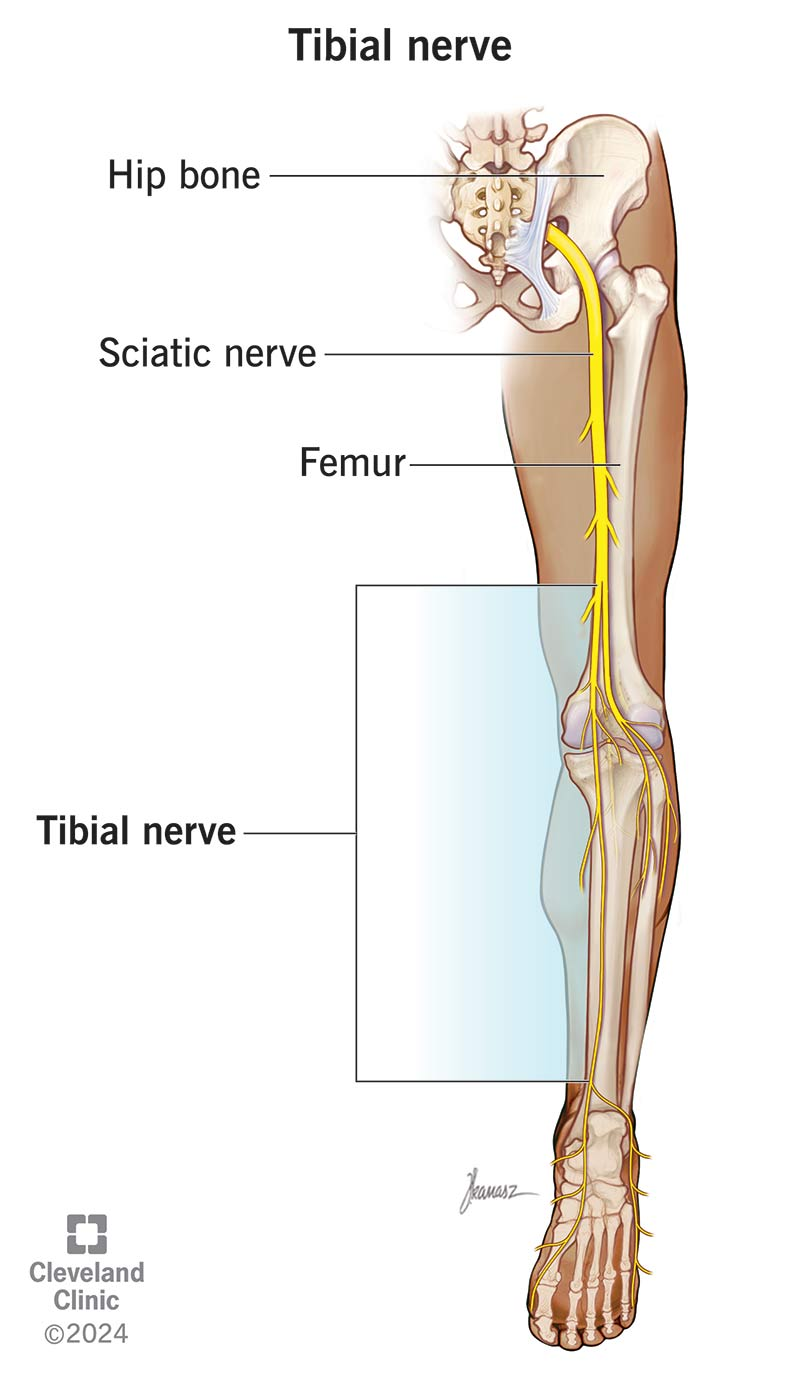Your tibial nerve takes a fairly straight path from the back of your knee, down your lower leg and to your foot. It allows you to move muscles and feel skin sensations in certain parts of your lower leg, foot and toes. Like other peripheral nerves in your body, your tibial nerve can experience damage, causing symptoms like pain and muscle weakness.
Advertisement
Cleveland Clinic is a non-profit academic medical center. Advertising on our site helps support our mission. We do not endorse non-Cleveland Clinic products or services. Policy

Your tibial nerve is a peripheral nerve that supplies movement and feeling (sensory function) to parts of the back (posterior) of your lower leg and foot. It’s one of two branches of your sciatic nerve — the largest peripheral nerve in your body.
All of your peripheral nerves — including your tibial nerves — are branches of other nerves in your body that originate from your spinal cord. If your spinal cord is the trunk of a tree, your peripheral nerves are its branches or roots.
Nerves are like cables that carry electrical impulses between your brain and the rest of your body. These impulses help you feel sensations (like touch and temperature) and move your muscles.
You have a tibial nerve in each of your legs. It’s called “tibial” because the tibia (your shin bone) is in your lower leg.
Advertisement
Cleveland Clinic is a non-profit academic medical center. Advertising on our site helps support our mission. We do not endorse non-Cleveland Clinic products or services. Policy
The function of your tibial nerve is to supply movement (motor) and sensory information between your brain and parts of your lower leg and foot.
The motor branch of your tibial nerve stimulates 21 muscles. It makes it possible to:
The sensory branch of your tibial nerve provides touch, pain and temperature sensations for the skin on the:
To understand your tibial nerve, it helps to know where it starts and ends. Your tibial nerve is one of two branches of your sciatic nerve, which branches off of your spinal cord in your lower spine. Your sciatic nerve can have some naturally occurring variations or differences in how it separates into branches. For most people, their sciatic nerve travels through their pelvis undivided. For others, their sciatic nerve branches into two nerves within their pelvis near the piriformis muscle.
Let’s assume your sciatic nerve divides below your pelvis. In this case, your tibial nerve starts above your knee in the back of your leg. From there, it:
Advertisement
Certain conditions and symptoms can develop if your tibial nerve experiences damage. They include:
Nerve compression is the most common way tibial nerve damage develops. Other causes of damage include:
You should contact your healthcare provider if you notice symptoms of tibial nerve dysfunction, including:
Advertisement
You can’t always prevent tibial nerve damage. But taking the following steps can help:
We often don’t think about our nerves until there’s a problem. Your tibial nerve has the important job of providing certain movement and sensory functions to your leg and foot. If you develop nerve pain or weakness in your lower leg or foot, it may be due to a tibial nerve issue. Reach out to a healthcare provider if this happens. They’ll help you understand what’s causing the symptoms and how you can manage them.
Last reviewed on 08/14/2024.
Learn more about the Health Library and our editorial process.